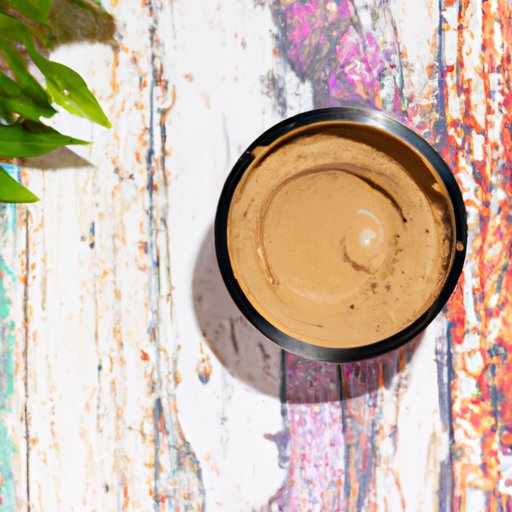Introduction
Painting is a form of expression that has been around since ancient times. The use of different colors can evoke diverse emotions and sentiments. One color that is essential in any artist’s palette is brown. Brown paint has been utilized by artists throughout history, from creating realistic portraits to abstract masterpieces. If you’re interested in making your own brown paint, this article will guide you through different methods and techniques.
Historical Perspective
Brown paint has been used in paintings for thousands of years. It was highly sought after by ancient Egyptian and Greek artists and was used to create pottery, cave paintings, and wall murals. In medieval Europe, brown paint was widely used in illuminated manuscripts as well as oil paintings.
Traditional recipes for brown paint included mixing various soil clays, oxides, and mineral pigments. In modern times, synthetic pigments are often used to create brown paint, primarily for a more consistent and convenient result.
Natural Methods
If you’re looking for a more organic approach, you can create brown paint using natural ingredients. Rocks such as ocher and sienna contain iron oxides and are commonly used to produce brown pigments. Walnut hulls, acorns, and tea bags are also used to create brown dye. The process includes crushing the materials and making a paste that is mixed with a liquid binder.
To make a natural brown color, you can try mixing these pigments with different binders such as egg yolk, gum arabic, or honey. It’s essential to note that natural paints may not be as stable or long-lasting as synthetic pigments. However, it brings an organic and ancient feel to your artwork.
Science-Based Approach
As much as art is a form of creativity, science does play an essential role in constructing the perfect shade of brown. To make brown paint by mixing colors, you’ll need to have an understanding of color theory. According to color theory, any hue can be created by mixing the primary colors red, yellow and blue. By mixing red and green or orange and blue, we can produce different hues of brown.
Another way to make brown paint is by mixing different pigments. For instance, you can mix yellow ochre and burnt sienna to obtain different shades of brown with a warm hue. On the other hand, if you mix dioxazine violet and raw sienna, you can create a cooler, desaturated brown.
DIY Project
If you’re ready to start creating your own brown paint, you’ll need a few things like paintbrushes, pigments, and something to mix the paint with, such as a bowl or palette knife. For this project, you can use a mixture of burnt sienna, raw umber, and yellow ochre to create a mid-tone brown.
Begin by mixing the yellow ochre and raw umber to form a beige color. Then add small amounts of burnt sienna to get a darker shade of brown. Continue to adjust the ratio of the pigments until you achieve the desired hue. Finally, add your paint mix to a small container with a binder to create your paint.
Artist’s Perspective
To perfect the use of brown paint, we’ve spoken to professional artist and painter Sarah Adams. Sarah shared some tips on how she incorporates brown paint into her artworks. “I find that raw umber is a versatile color that can create different shades of brown, depending on the binder used,” says Sarah.
She explains how mixing a bit of titanium white with raw umber can create warm, beige tones that are perfect for creating skin tones or painting vintage objects. Sarah suggests that for a more intense and dark brown, one can mix raw umber with black.
Conclusion
Creating brown paint may seem like an easy task, but it requires some form of precision and experimentation to get the perfect shade of brown. Natural pigments, science-based approaches, and DIY projects offer diverse methods to create brown paints that cater to any artist’s preference. Incorporating brown paint into your artwork will add a touch of warmth, elegance, and organic feel. It’s time to get experimenting, have some fun, and unleash your creativity.
